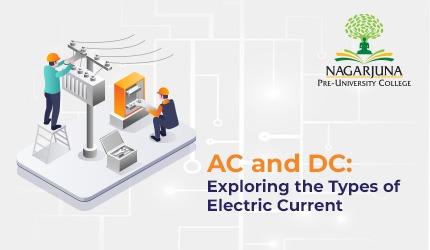AC and DC: Exploring the Types of Electric Current
As we know, electric current is the flow of electricity in a circuit. The main component of electricity is the charged electrons that carry the current. These electrons are negatively charged based on their interaction with the electromagnetic field present.
The flow of these electrons determines the types of electric current, famously known as alternating current (AC) and direct current (DC). The main difference between the flow types is the direction in the electrons flow. In the AC, the electrons switch directions while travelling forward and backwards, whereas, in the DC, the electrons follow a straight path or a single direction.
Let’s dive deep into the types of electric current.
AC and DC: The Types of Electric Current
Alternating Current (AC)
The flow of electric charge in alternating current is not linear, as it switches directions cyclically. Going back in time, the first alternating current test was based on Michael Faraday's principle using the Dynamo Electric Generator in 1832.
In most circuits, the waveform of AC is viewed as a sine wave. Here, the positive side of the wave corresponds with a positive charge, and the negative side corresponds with a negative charge. The sine waves in the electric cycles are measured per second in the measurement of Hz. Therefore, the frequency tends to change according to the usage in particular countries, but the average frequency stated is to be between 50 Hz to 70 Hz.
Therefore, residences and businesses use this electric power among the types of electric current, which can be accessed effectively by plugging in their gadgets. The devices that resemble alternating current are kitchen appliances, televisions, and many more.
Direct Current (DC)
Direct Current is a unidirectional flow of electric charge. It flows from the positive terminal to the negative terminal or vice versa. Therefore, the DC can be entirely positive or entirely negative. But this current doesn't carry an electric charge for a long distance as the travelling may cause energy leak or loss.
The main application of DC is to supply power to electrical devices and batteries. Therefore, the devices that need a battery to run or use an AC adapter while plugging into the wall socket have the DC power stored in it.
Both types of electric current have significant usage and can be converted using specific tools like rectifiers and inverters. Rectifiers are used to convert AC to DC, whereas an inverter helps convert DC to AC.
The electric current can be explored more practically in the technologically advanced laboratories of Nagarjuna Pre University College, a prominent institution for innovators.
Keep Exploring!
